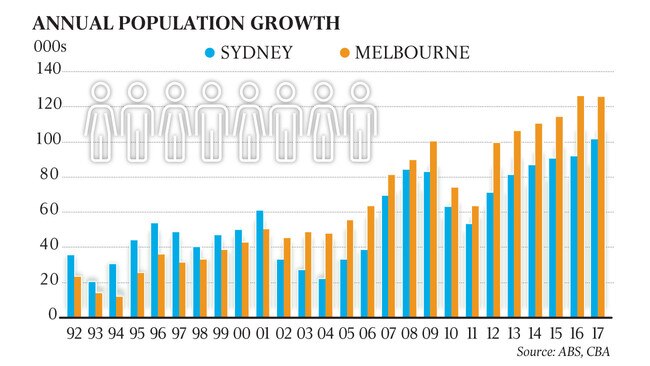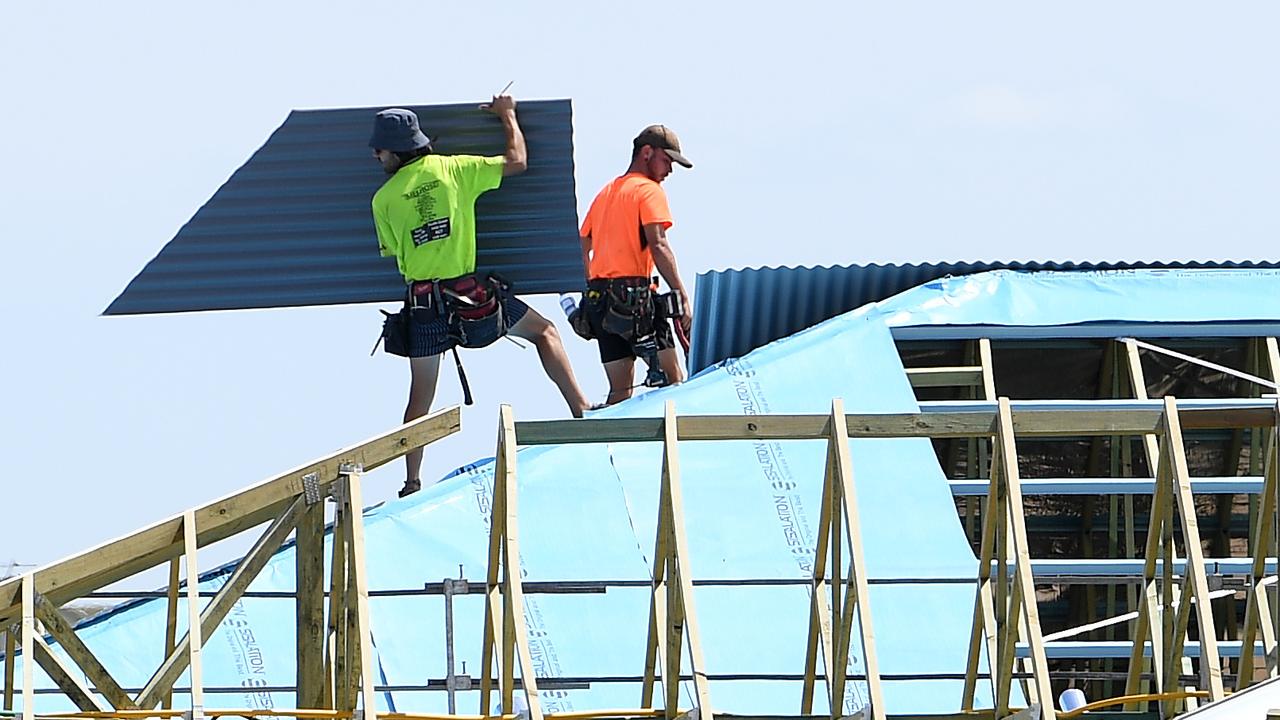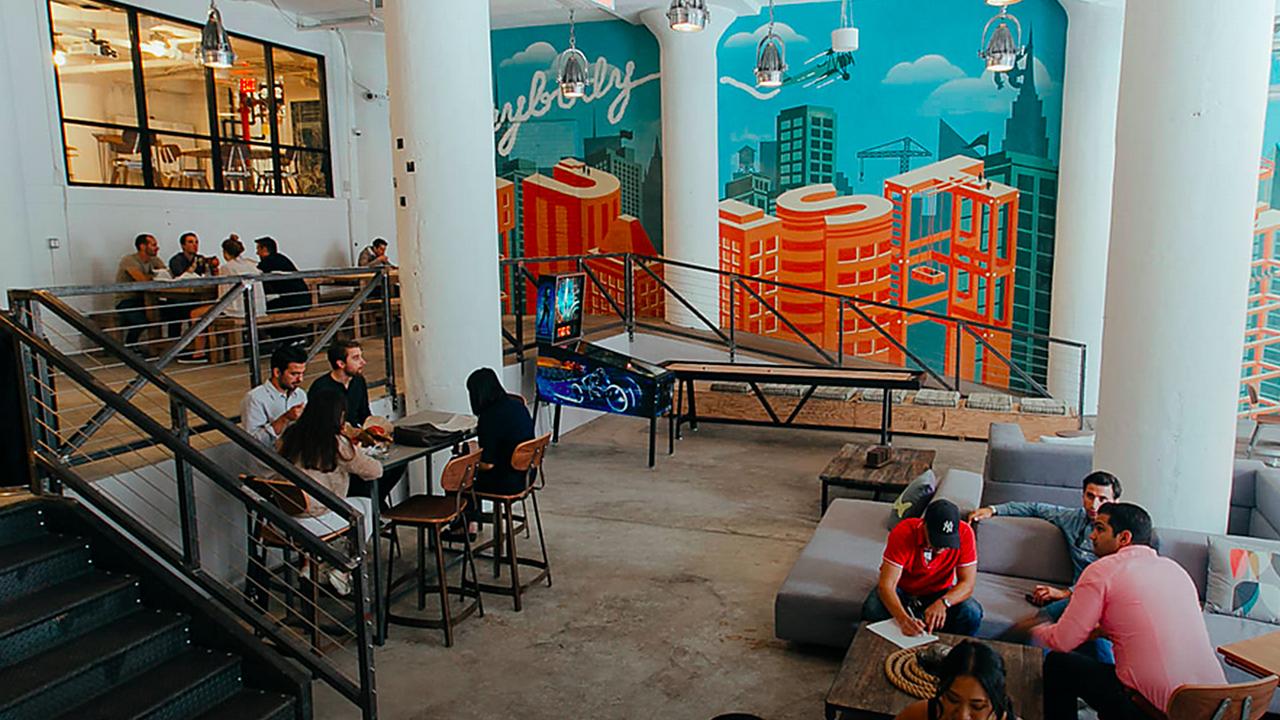Move over Sydney because Melbourne is coming through. Figures released yesterday by the Australian Bureau of Statistics confirm that Melbourne is closing the population gap with Sydney. The southern capital added a record 125,000 net extra residents over a year to reach a population base of 4.85 million at June last year.
Sydney added 102,000 over the same period, to reach 5.131 million. The difference is now down to 281,000, with Melbourne closing the gap at a rate of 24,000 a year. If these rates were to continue, Melbourne would in the next decade regain the title of the largest city on the Australian continent. Melbourne was the nation’s largest city between 1858 and 1901.
For 100 years to the 2000 Olympics, Sydney pulled ahead of Melbourne more or less every year, but since then the Victorian capital has been steadily redressing the imbalance and closing the population gap. Fewer Victorians and fewer Melburnians are leaving their state; more migrants are choosing Melbourne over Sydney; and both cities continue to grow due to natural increase.
The demographic story is more than this, however. Perth’s growth rate has slumped from 60,000 in the year to June 2012 to 21,000 five years later. Adelaide’s growth rate has subsided from 18,000 in the year to June 2009 to 10,000 nine years later. Brisbane has held steady, adding 48,000 net residents in the year to June 2017, attracting residents from interstate, overseas and by natural increase.
On current growth, Melbourne is likely to pass the five-million mark in the second half of this year, although the ABS will not confirm this until April 2020.
Perhaps at this stage it is worthwhile comparing Australian cities with large, Western, car-based cities. Greater Los Angeles sprawls across an axis of 200km and contains 19 million people. Greater New York contains 24 million. Greater Tokyo contains 38 million. London and Paris are defined as comprising between eight million and 10 million and both could easily fit side by side within Sydney or Melbourne. Bear in mind also that New Zealanders think Auckland is a vast city; it’s actually a bit bigger than Adelaide.

These new figures raise a number of issues. How do cities that have evolved on the basis of growth rates of 50,000 to 60,000 a year deliver affordable housing and fluidity in an environment when the growth rate is double the long-term average? There is a point at which cities get the speed rattles — they struggle to deliver the services required by the sheer scale and pace of growth. In this situation, the city begins to collapse under its own weight — or at least until such time as infrastructure catches up.
Yet there are other, even more compelling questions that these figures raise.
Why is Sydney faltering as the city that for a century attracted most annual growth on the Australian continent? And why is Melbourne booming? The answer, I think, stems from a unique confluence of luck and good governance. Melbourne is lucky because it can sprawl across a flat, easily developed plain.
Indeed, Melbourne’s growth focus has flipped from the east to the west, where house-and-land packages can be delivered barely 30km from the CBD for about $400,000. Sydney cannot compete with Melbourne on this score — it can’t even get close to these metrics. Put simply, Melbourne is better able to deliver the Australian dream of home ownership combined with reasonable access to a global-city job market.
This story goes even further. Both Melbourne and Sydney are burgeoning — Melbourne a little more so than Sydney — but it’s almost as though, in the post-mining-boom world, job growth has contracted from the outermost colonies to the heartland’s premier knowledge-worker cities.
The winners, and some might say the losers because of consequential congestion and housing affordability issues, are those Australian cities that offer knowledge work and superior connectivity into the global economy, and that plan ahead for long-term growth.
Sydney beats Melbourne in some of these measures and Melbourne beats Sydney in others. Either way, the cities everyone wants a piece of, at the moment at least, are growing at record rates: namely Sydney and Melbourne.
Bernard Salt is managing director of The Demographics Group. bernard@tdgp.com.au






To join the conversation, please log in. Don't have an account? Register
Join the conversation, you are commenting as Logout